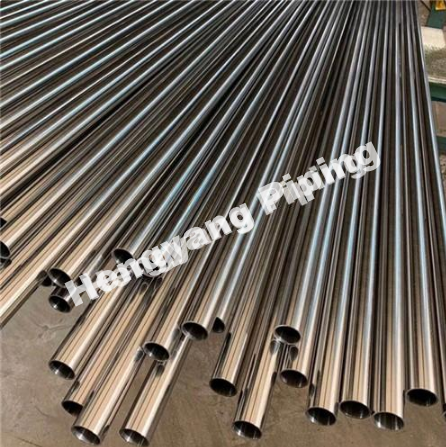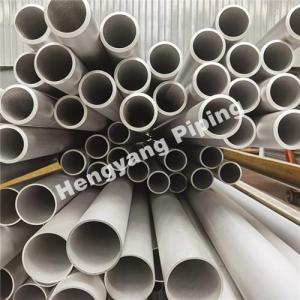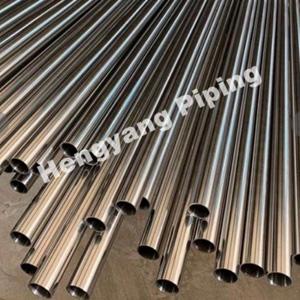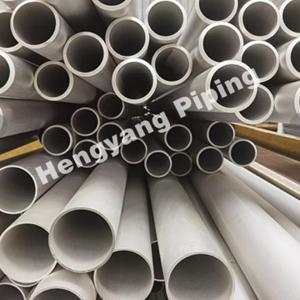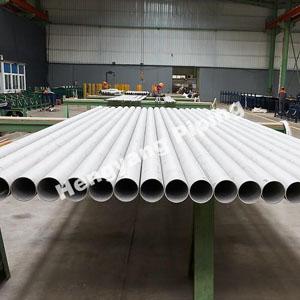How Duplex Stainless Steel Redefines Reliability and Durability
Duplex stainless steel is a very useful metal that is used the world over. It gets its name from the fact that it consists of two different grades of metal.
Essentially, Duplex is a Fe-Ni-Cr alloy that has a two-phase ferritic-austenitic stainless-steel microstructure when it is at room temperature.
Duplex steels are defined by their elevated chromium (19–28%) and molybdenum (up to 5%) levels, along with reduced nickel content compared to austenitic stainless steels. Among the widely utilized types are 2205 (with 22% Chromium, 5% Nickel) and 2507 (with 25% Chromium, 7% Nickel), the latter often referred to as "super duplex" due to its superior corrosion resistance.
The key advantage lies in blending ferritic and austenitic grades, resulting in a metal with a dual-phase metallurgical structure that harnesses the strengths of both microstructures.
These exceptional properties render duplex steel highly desirable in heavy-duty sectors such as oil and gas, nuclear, and chemical processing industries.
Creation of Duplex
The emergence of Duplex steels dates back to the 1920s, with the first casting occurring in Sweden around 1930. However, the widespread adoption of Duplex began approximately 30 years ago, coinciding with advancements in steelmaking technology.
The two primary metals utilized in creating Duplex—namely austenitic and ferritic—each possess qualities suitable for various scenarios. However, they also exhibit individual weaknesses that have limited their broader application.
Austenitic metal demonstrates low strength and susceptibility to stress corrosion cracking, while ferritic metal suffers from low strength, challenging weldability, and poor toughness at lower temperatures.
By blending a chemical composition that incorporates both austenitic and ferritic elements, a metal is produced with enhanced strength, improved weldability, greater toughness, and resistance to stress corrosion cracking.
The heightened strength of duplex stainless steel, with a 0.2% Proof Strength ranging from 400 to 550 MPa for current grades, enables the use of reduced section thicknesses and consequently, decreases the overall weight. This advantage proves particularly significant in applications such as pressure vessels, storage tanks, and structural purposes like bridges.
However, a downside of Duplex steel is its brittleness at extreme temperatures, typically restricting its usage to a maximum temperature of 300 degrees and a minimum of -50 degrees.
In the creation of duplex stainless steels, the objective is to achieve a mixed microstructure of austenite and ferrite metals in a 50/50 ratio, although commercial alloys might exhibit a mix closer to 40/60, respectively.
It's worth noting that the development of duplex steels is an ongoing process, with different ratios of austenitic versus ferritic metals still undergoing testing and exploration.
Advantages of Duplex Stainless Steel:
1. Strength: Duplex stainless steel boasts nearly twice the strength of standard austenitic or ferritic stainless steels.
2. Toughness and Ductility: While not as robust as austenitic grades, Duplex stainless steels surpass the toughness and ductility of ferritic grades.
3. Corrosion Resistance: The corrosion resistance of Duplex stainless steels, heavily reliant on its composition—primarily chromium, molybdenum, and nitrogen content—is exceptional. They exhibit remarkable resistance to stress corrosion cracking (SCC), even in chloride and sulphide environments, provided specific conditions such as tensile stress, corrosive surroundings, and sufficiently high temperatures are met.
4. Heat Resistance: Compared to austenitic steels, Duplex stainless steel possesses higher heat conductivity and lower thermal expansion. Its enhanced ductility at low temperatures allows for usage down to at least -50°C, surpassing the performance of ferritic grades.
5. Cost Efficiency: Duplex stainless steels contain lower amounts of nickel and molybdenum compared to their austenitic counterparts, resulting in reduced alloying costs. Additionally, their increased yield strength enables the possibility of thinner product designs, facilitating significant weight savings.
6. Weldability: While not as easily weldable as austenitic grades, Duplex stainless steels generally exhibit good weldability, accommodating all standard welding processes.
Applications of Duplex
Duplex stainless steel finds wide-ranging applications across various industries due to its numerous advantages. Some of these applications include:
1. Chemical processing, transportation, and storage
2. Pipelines for the production and conveyance of oil and gas
3. Oil and gas exploration, including offshore rigs
4. Oil and gas refining processes
5. Marine environments and equipment
6. Pollution control devices
7. Manufacturing of pulp and paper
8. Chemical process plants
9. Structural and mechanical components
10. Heat exchangers
11. Cooling pipes
